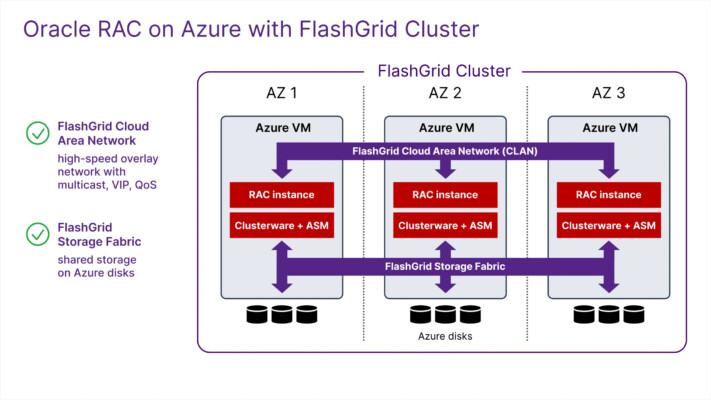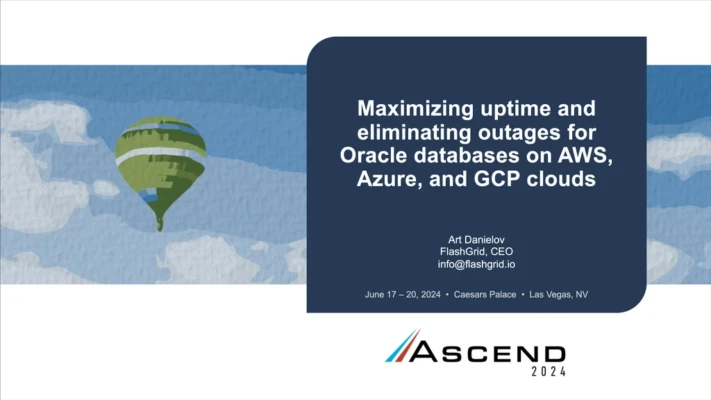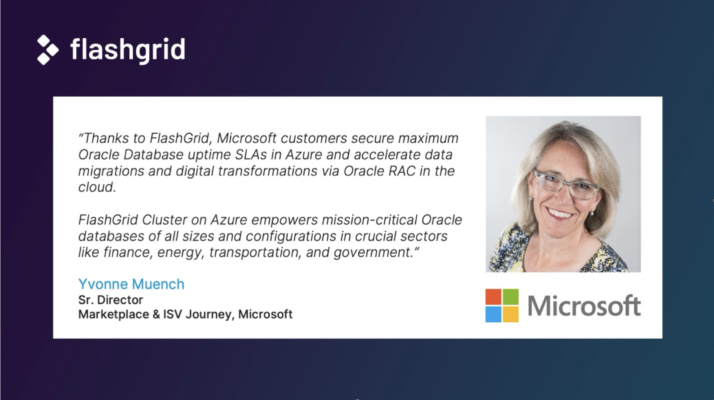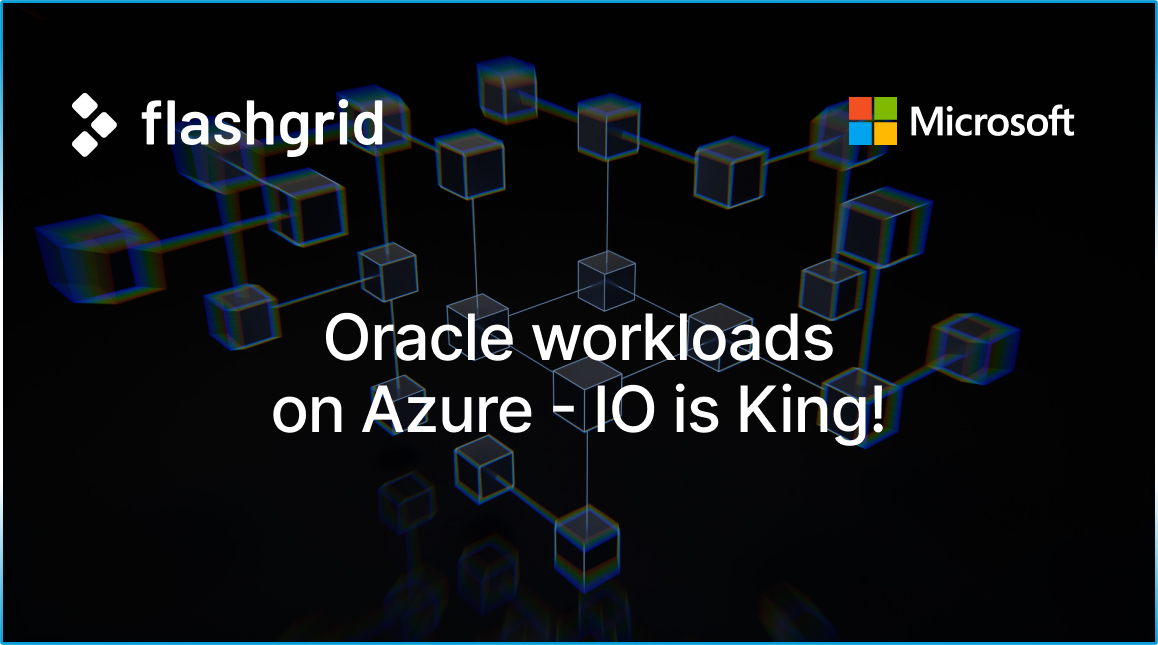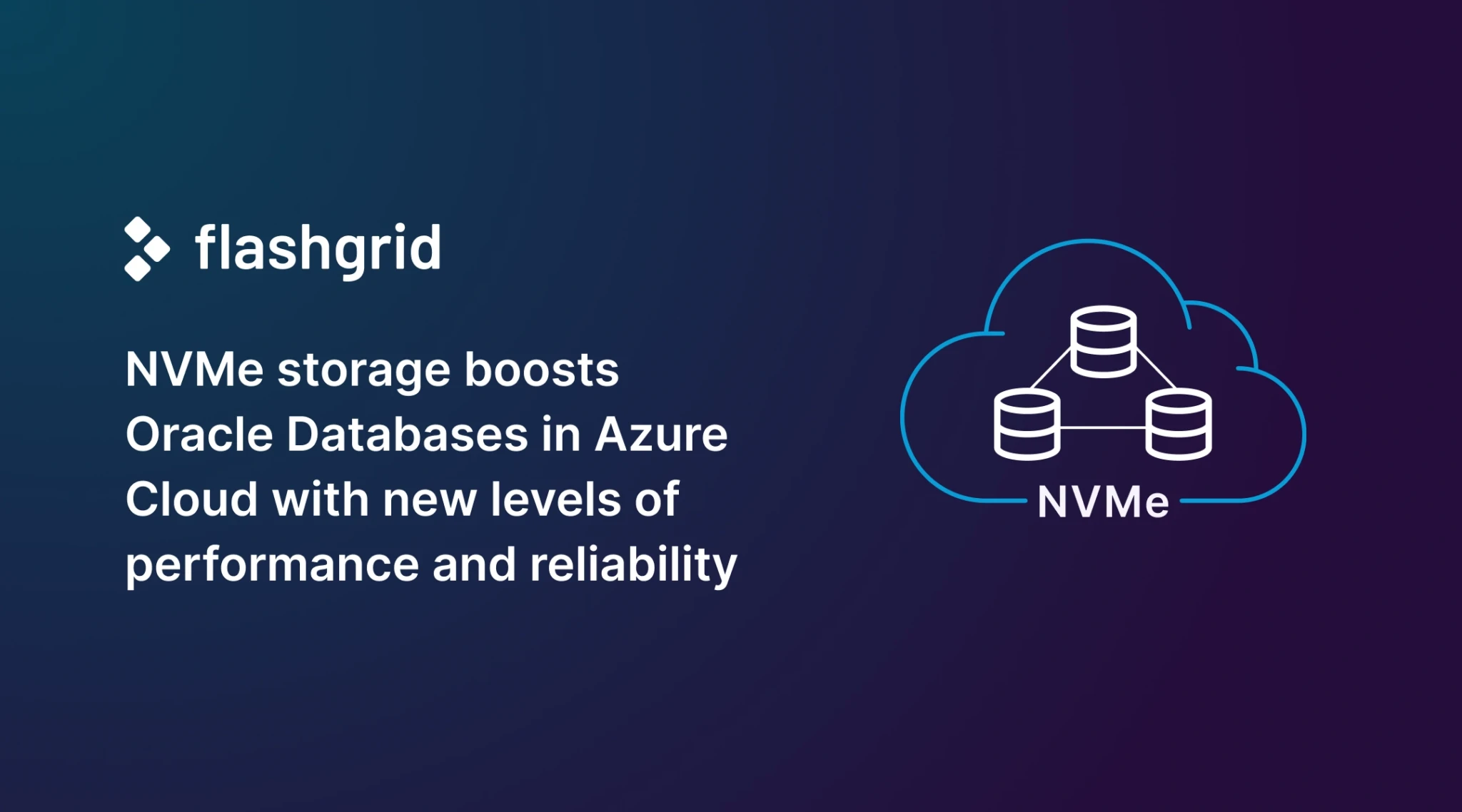
For years, Oracle Database users have used FlashGrid Cluster to achieve the best uptime on Azure Cloud. Many of them have very large and high-performance databases, including ones migrated from Exadata systems.
Today, FlashGrid announces the general availability of FlashGrid Cluster on Azure VMs with NVMe disk storage. NVMe (Non-Volatile Memory Express) is the state-of-the-art storage protocol that is replacing the legacy SCSI-based storage connectivity in the Azure Cloud ecosystem. NVMe offers new levels of performance, efficiency, and error handling, which help to improve reliability and uptime.
Storage performance (IOPS, MBPS, and latency) is critical for Oracle databases since the primary function of a database system is storing and retrieving data. With the transition to NVMe, the maximum MBPS per VM is increased by 50%, and the maximum IOPS per VM is increased by 120% compared to the same VM (Ebsv5 type) with the SCSI connectivity. At 10,000 MBPS and 400,000 IOPS, a single E112ib_v5 VM exceeds the capabilities of a typical on-premises all-flash storage array. With 2 or 3 nodes in a simple Oracle RAC cluster, the throughput numbers are further multiplied by 2x or 3x. More detailed performance data is available here.
About FlashGrid
With FlashGrid, organizations build modern database infrastructure that power mission-critical operations. FlashGrid’s platform for public clouds, private clouds, and physical environments allows databases to achieve the best performance and uptime SLA.
FlashGrid’s Oracle and cloud experts provide 24/7 support with analysis, deployment and maintenance of database infrastructure, enabling maximum uptime through the entire lifecycle of applications. For more information visit www.flashgrid.io






